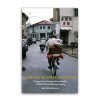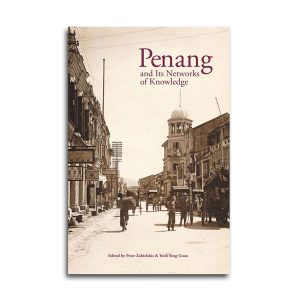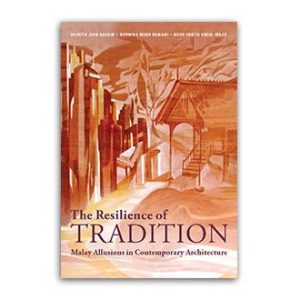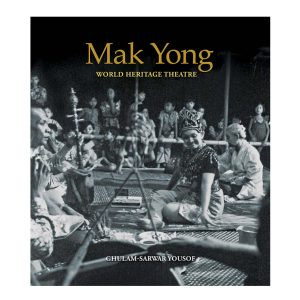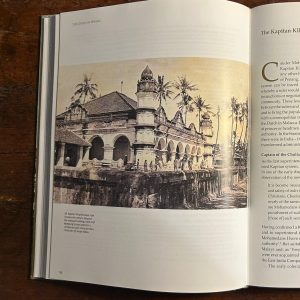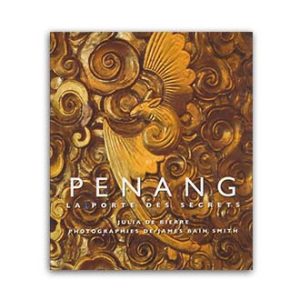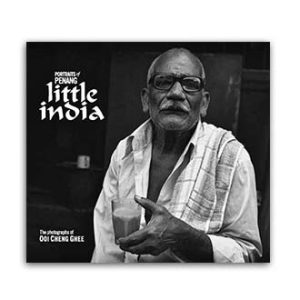Contested Space Revisited: George Town Penang, Before and After UNESCO World Heritage Listing explores the cultural, social and physical history of the East India Company’s historic port settlement of George Town and its multi-ethnic population, tracing its urban evolution, the cultures and traditions of its diverse communities and the reflection of these influences in their architecture, urban forms and ways of living and celebration, as well as their perpetuation, adaptation and/or demise.
In order to understand the challenges of tangible heritage in the intangible context, the histories of six built heritage sites, and their ‘owner’ communities, are followed through both pre and post UNESCO World Heritage Listing 2008. In contrast to this tangible ‘form’, the interstitial space of the urban street is reviewed as an ‘unseen’ cultural space where funerals, processions, and festivals take place in accordance to the cultures, faiths and traditions of the communities. It is also the pathway for the adhan (Muslim call for prayer), the daily route from home to work, to worship, to market or to school and back again.
In the ten years following UNESCO World Heritage inscription, these same historic George Town “streets have filled with trinket markets, tour buses, shoals of tourists, and all the accompanying freeloaders hoping to make a ‘buck’ or two, as well as ‘outstation’ cars scrambling for parking outside the latest gentrification treat. What was once respectfully shared has become a contested space.”
Contested Space Revisited: George Town Penang, Before and After UNESCO World Heritage Listing, is in fact two books-in-one, with a visual story illustrating this urban evolution placed in between. The first part, Contested Space, Heritage and Identity Reconstructions, Conservation Strategies within a Developing Asian City 2008, was a limited publication and evolved from the author’s PhD thesis supported by the Centre of Southeast Asia University of the University of Hull, UK, published by Lit Verlag. This documents George Town’s ‘contested space’, from its inception in 1786 to the day the joint nominated sites of George Town and Melaka were visited for World Heritage Site evaluation. It places the efforts to achieve such status in the context of national and international influences, including those of heritage conservation bodies and examines the impact of such influences on cultural and identity perceptions and reconstructions.
The second part of this book, Contested Space Revisited 2018, re-examines the issues of George Town’s ‘contested space’ in the decade after inscription – the impacts of population decline, site management, urban interventions, cultural interpretations, gentrification and tourism, once again in the context of national and international influences, and explores the evolved heritage and identity reconstructions of the World Heritage Site.
The story of this dynamic shift does not end with this book which simply forms the foundation and structure for future studies that should go on to examine the inter and intra-relationship between people, place and space as it evolves as a “city in cultural context.”
Contents
List of Illustrations and Tables
Abbreviations and Acronyms
Author’s Notes
PART ONE
Contested Space: Cultural Heritage and Identity Reconstructions,
Conservation Strategies within a Developing Asian City, 2008
Preface and Introduction
Methodology, Fieldwork, and Personal Reflection
The Layout of this Book
Acknowledgements 2008
CHAPTER 1
Whose Heritage? Whose Culture? Whose Space?
CHAPTER 2
Urban History: Community, and Architectural Identity 1786–1970
CHAPTER 3
National Development: Policies and Practice 1957–2007
CHAPTER 4
Penang State: Development and Conservation 1957–1990
CHAPTER 5
Contested Space: Urban Development or World Heritage Site? 1990–2007
CHAPTER 6
Heritage, Culture and Tourism:
Cultural Identity and Consumption of the Historic Inner City
CHAPTER 7
Case Studies: Heritage Conservation Realities
CHAPTER 8
The World Heritage nomination,
at the point of UNESCO evaluation in 2007
THE VISUAL STORY
PART TWO
Contested Space Revisited, 2018
Preface to second edition, 2018
Acknowledgements
CHAPTER 9
Managing Half a World Heritage Site: 2008–2018
CHAPTER 10
Case Studies Revisited: Changing Values, Lost Significance?
CHAPTER 11
George Town World Heritage: Past, Present and Future
Appendix
Glossary
Bibliography
Index
Reviews


